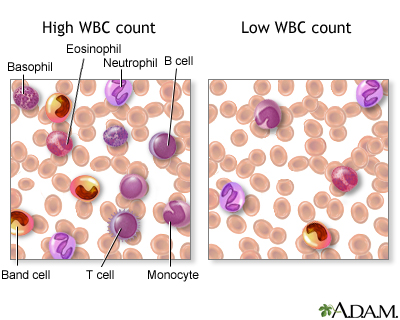Nervous system
a. nervous tissue and functions
b. myelin sheath
c. nerve impulses and propagation of action potentials
d. sodium/potassium pump
e. synapse
f. CNS
g. PNS
h. Effects of substance abuse
SENSES
a. receptors and sensation
b. proprioceptors, cutaneous, and pain receptors
c. sense of taste and smell
d. sense of vision, A & P of vision
e. sense of hearing, A & P of hearing
The Nervous system contains two major regulatory system of the body. There is the Central Nervous System (CNS), and the Peripheral Nervous System(PNS). First I would like to explain nervous tissue and their functions because this is how these systems function properly.
Nervous tissue contains two types of cells; neurons and neuralgia (cells). The neuron plays a significant roll in the Nervous system. There are three parts to a neuron. First there is the cell body which contains the nucleus, mitochondria and other organelles. Next, there is the axon, which conduct impulses away from the cell body. Dendrites are the last part of a neuron. They are responsible for receiving messages from other cells and conducting those impulses towards the cell body.
 www.understanding_ocd.tripod.com
www.understanding_ocd.tripod.com
There are also three types of neurons and they are classified by their function. Sensory neurons, these neurons are responsible for carrying impulses from the sensory receptors to the Central nervous system. Motor neurons, transmits the impulses or messages from the CNS to a effector muscle or a gland. Effectors carry out our responses to environmental changes, being internal or external. Interneurons, they are only found in the CNS and connect neuron to neuron. They also communicate the messages to the motor neuron, but before they do they sum up the information. Sensory receptors are special structures that detects change in the environment. Neuralgia cells (glia cells) cannot conduct their own action potentials and serve as support cells and help protect neurons.
Myelin Sheath is the protective covering surrounding some axons. The myelin sheath is composed of schwann cells, which are produced in the PNS. The cells wrap themselves around the axon several times. In the CNS, oligodendrocytes are responsible for the myelin sheath. Both of these cells only cover a portion of the axon, leaving exposed areas, which are called Node of Ranvier. Gray matter in the CNS is gray because it does not contain myelinated axons and the white matter in the CNS is white because it does contain myelinated axons. Important note is that if an axon is accidentally severed the myelin sheath remains and serves as a passageway for new fiber growth.
ACTION POTENTIAL
This is a great example of an action potential. I will explain each of these processes that appear in this graph I found online. Action potentials are measured my an voltmeter. Action potentials are the rapid change in polarity across an axonal membrane as the nerve impulse occurs. All of these steps ARE the action potential. I will try and go through each step and how they occur. Resting potential is when the axon is not conducting an impulse or a message. The resting potential usual measures at -65mV (millivolts). When the membrane is stimulated it creates an action potential. POLARIZATION, not seen in this graph charges are separated across the plasma membrane has potential. Anytime the value of the membrane potential is other than )mV in either positive or negative direction the membrane is in the state of polarization. When DEPOLARIZATION occurs a change its the potential that makes the membrane less polarized (less negative,inside) than at resting potential. Depolarization decreases membrane potential moving it closer to 0mV. Notice the graph above. With REPOLARIZATION, the membrane returns to resting potential after having been depolarized. HYPERPOLARIZATION, is a change in potential that makes the membrane more polarized (more negative) then at resting potential. It increases membrane potential moving it even farther from 0mV. All of these actions are controlled by voltage gates and the sodium potassium pump. These gates open and close allowing ions (sodium and potassium) into and out of the cell. The sodium gates open first when an action potential occurs and Na+ (sodium) flows into the axon. When it moves inside it changes the membrane potential from negative to positive. The potassium (K+) gates second and the potassium flows out changing the membrane potential. The sodium-potassium pump is very important when it comes to balance. Both of these ions are very important in homeostasis!!!!

www.upload.wikimedia.org/wikipedia/commons
Propagation of an action potential. I found this great animation online showing the action potential. When the axon is unmyelinated the action potential at one location stimulates an adjacent part of the axons membrane to produce a action potential. In myelinated axon there are bare spots on the axon itself (node of Ranvier) that speeds up the action potential. This is called a saltatory conduction. The nerve impulse actually jumps from node to node. After a stimulus of an action potential occurs, it goes through a refractory period. This is when the patch of membrane that has just been stimulated it becomes unresponsive to further stimulus and prevents an action potential from spreading backwards into the area through which it just passed. An action potential is an all-or-none event!!!
SYNAPSES
A synapse is actually a junction between a nerve cell and another cell. Action potentials are propagated from the axon hillock to the axon terminal. The axon hillock is the first portion of the axon where the action potential takes place then it makes its way down the axon to the axon terminals. At the synapse, there is a small gap called the synaptic cleft, this area is actually to wide for the direct spread of a current from one cell to another. It prevents action potential from electrically passing between neurons. Synapse only work in one direction. Neurotransmitters carry the signal across the synapse. The neurotransmitters are stored in the axon terminals.
STEPS IN THE SYNAPSE
1. When an action potential in a presynaptic neuron has been propagated to the axon terminal, this change in potential triggers the opening of the Ca+ (calcium) gate channel in the synaptic knob.
2. The calcium ions flow through the opened channels
3. Calcium allows the release of a neurotransmitter from some of the synaptic vesicles into the synaptic cleft.
4. The released neurotransmitters diffuse across the cleft and binds with protein receptor sites.
5. The binding triggers the opening of specific ion channels, changing the ion permeability of the postsynaptic neuron.
6. Once the neurotransmitter has been released and initiated a response, it is removed from the cleft.
Some synapses can be excitatory or inhibitory. With the excitatory synapse the response to the binding of a neurotransmitter to the receptor is the opening of nonspecific channels and permit passage of sodium. With inhibitory synapse it would allow the passage of potassium to enter the neuron. Sometime a neurotransmitter can be inactivated due to an enzyme called acetylcholinesterase. This particular enzyme breaks down acetylcholine. Some neurotransmitters are reabsorbed for reuse. There are different types of neurotransmitter molecules. One example, is acetylcholine and norepinephrine. These two are seen in the CNS and the PNS. Norepinephrine excites smooth muscle.
CENTRAL NERVOUS SYSTEM
The central Nervous System consists of the spinal cord and brain. The brain is where the sensory input is received and then sent to the motor control for initiating. The brain and spinal cord are protected, not only by bone, but other important membranes. Underneath the bone are the meninges and the spaces between these meninges is cerebral spinal fluid which cushions and protects the organs they hold. There are three layers to the meninges. The first layer is the PIA MATER (delicate mother) and this layer is vascular and shares blood supply with the underlying nerve tissue. The second layer is the ARACHNOID MATER and this protects the brain. It also resembles a spider web, contains cerebrospinal fluid and is impermeable. The third layer is the DURA MATER (tough mother) and is functionally important because it reduces the risk of abrasion of the inner layer and the central nervous system. The brain also has four ventricles which are interconnecting chambers that produce and serve as a reservoir for cerebrospinal fluid (CSF). This reservoir is very important because it drains the excess CSF into the cardiovascular system. If it is not drained, with a child it can cause hydrocephalus which is water on the brain and in an adult the extra fluid has no where to go because the adult brain is larger then a child's that is still developing. The CNS is composed of two types of nervous tissue; GRAY MATTER and WHITE MATTER. The Gray matter is mostly cell bodies,dendrites and terminals, is the spinal reflex integrating center and consists of sensory and motor nuclei. The White matter have bundles of myelianted axons and run along tracts. These are ascending tracts with sensory to dorsal (the back) root that carry info to the brain. The descending tracts are motor to ventral (the front) roots and carry commands to motor neurons. The spinal cord is on the dorsal side of the body and extends from the base of the brain through the foramen magnum and the vertebral column. The bones in the vertebra protect the spinal cord. The spinal cord plays a key role in communication between the brain and the peripheral nerves.
 www.serious-injury-lawyers.org
www.serious-injury-lawyers.org
The spinal cord is the location where reflex arc happens. An example of a reflex arc would be a painful stimulus. When this happens it sends a signal to the brain through the afferent pathway, which then propagates the electrical signal. Then once the afferent neuron enters the spinal cord it diverges or spreads and terminates on three different types of internuerons; (1) excitatory interneurons which will in turn stimulate the efferent motor neurons to the site where the pain was felt and pull it away from the stimulus (2) inhibitory interneurons will inhibit the efferent motor neuron to the site of the pain and preventing counterproductive contraction of this muscle and (3) interneurons that carry the signal up the spinal cord via the ascending pathway to the brain for awareness of pain and memory storage. Before I move on I would like to point out some portions of the brain. The cerebrum, (telencephalon) is the largest portion of the brain and is located in the frontal lobe, which is the forehead area. The cerebrum is the last area that receives sensory input. The cerebrum is responsible for reasoning and thought. It has two parts to it and is called the cerebral hemisphere. It is further divided into left and right. Each of these hemispheres are divided into four lobes; frontal,parietal, temporal, and occipital. The cerebral cortex plays a key role in the most sphicated neural functions such as, voluntary initiation of movement, final sensory perception, conscious thought, language and personality traits. The cortex contains both sensory and motor areas. Another interesting fact about the cortex is where language is associated. the Wernicke's area and Broca's area. The Wernicke's area helps us understand written and spoken language and then sends info to the Broca's area. The Broca's area stimulates the right muscles for speaking and writing. The hypothalamus and thalamus are located in the dienephalon, which is in the third ventricle. The hypothalamus is associated with the pituitary gland and controls body temp, urine output, uterine contractions and is the thalamus receive sensory input except smell. The cerebellum lies in the occipital lobe (vision) and is actually separated from the brain stem by the fourth ventricle. The cerebellum is responsible for coordination of muscles, balance, posture and muscle tone. The medulla oblongata is very important because it is responsible for heart beat, breathing, coughing, sneezing, and blood pressure.
LIMBIC SYSTEM
The Limbic system is involved with our emotions and motivations.particularly those that are related to survival. Such emotions include fear, anger, and emotions related to sexual behavior. The limbic system is also involved in feelings of pleasure that are related to our survival, such as those experienced from eating and sex. There are two significant structures in the Limbic System they are the amygdala and the hippocampus. The amygdala is involved in emotional responses, hormonal secretions, and memory. It can use past knowledge to assess a current situation. The hippocampus is responsible for sending memories out to the appropriate part of the cerebral hemisphere for long-term storage and retrieving them when necessary. Also, plays a key role in learning and memory. There are different types of memory; short term, long term, semantic, and episodic.
PERIPHERAL NERVOUS SYSTEM
The PNS contains the nerves which lie in the spinal cord. We have 12 pairs of cranial nerves. They all serve a different purpose; mainly the head, neck and facial region. We also have 31 pairs of spinal nerves. The PNS consists of nerves that transmit info to the and from the CNS. Sensory(afferent) neurons transmit nerve impulses towards the CNS. Motor (efferent) neurons transmit impulses away from the CNS towards the effector organs such as muscles or glands. The PNS also has divisions; The autonomic which divides further into the sympathetic and parasympathetic and then the somatic system. The nerves in the somatic system serve the skin, skeletal muscles and tendons. The autonomic systems with its two divisions are interesting. Here is a great picture separating the the two systems and their actions to stimulus:
As you can see in the picture above these two divisions of the autonomic system have opposite effects to certain forms of stimulus. The parasympathetic slows things down, and the sympathetic speeds things up. Also, in this picture you can see the nerve that innervates these reactions and parts of the brain where it is happening.
EFFECTS OF SUBSTANCE ABUSE
When you think of substance abuse some just think of heroin or pot, but there are so many (more today) "substances" out there that can effect your brain function and even damage brain cells. Alcohol is a drug that is accepted worldwide. There are a lot of people who abuse alcohol and is known to have harmful effects on the body and the brain. Not only does it effect the brain, but it can damage the liver and lead to death. The liver acts as a filter and gets rid of the bad stuff, but drinking alcohol excessively can damage that part that is so important. Alcohol also impairs our thinking, reasoning, and coordination. Alcohol is a depressant and slows down your respirations which can lead to death. some people can consume to much alcohol (effecting the CNS) and get alcohol poisoning. Another drug that people may not even consider a drug is nicotine. Nicotine has effect on the CNS and the PNS. With the CNS it binds to neurons within the CNS and dopamine is released. Dopamine will increase your heart rate and blood pressure. This constant effect will damage your heart. Another drug is methamphetamine. This is extremely dangerous because some people create meth labs which contain explosive stuff. Meth, as it is called, when smoked can keep the person awake for days. This obviously can be detrimental to the human body. There are a lot of drugs in the world today that can be deadly. The list can go on forever. I am sure I haven't heard all of them.
SENSES
RECEPTORS AND SENSATIONS
There are different types of receptors. First there is sensory receptors and these are familiar because of the nervous system. The sensory receptors are dendrites that detect certain types of stimuli. Exteroceptors are ones that detect stimuli form the outside of the body, such as taste and smell. Interoceptors receive stimuli from the inside of our bodies. Examples of interoceptors are pressorecptors which respond to changes in blood pressure. Osmoreceptors detect change in the water-salt balance and chemoreceptors monitor the pH of the blood. Interoceptors are directly involved with homeostasis!
TYPES OF SENSORY RECEPTORS
Chemoreceptors have to do with chemicals. As you can see by there name; "chemo" They are sensitive to specific chemicals, they include the receptors for smell and taste and as well as those located deeper within the body that detect oxygen and carbon dioxide concentrations in the blood or the chemical content in the GI system
Pain receptors (nociceptors) are sensitive to tissue damage such as pinching or burning. They make us aware of possible danger.
Photoreceptors are responsible for vision. The visible wavelengths of light. The photoreceptors can be found in our eyes.
Mechanoreceptors are sensitive to mechanical energy. One example is the skeletal muscle is sensitive to stretching or the ear containing fine hair cells for hearing are bent due to sound waves.
Thermoreceptors are sensitive to heat and cold.
Sensations involve the sensory receptors because it is a response to the sensation that makes the receptors to respond. When the nerve impulses arrive at the cerebral cortex of the brain, sensation which is the conscious perception of stimuli occurs. Above I explained the reflex arc and this is exactly like that. The great example of sensing pain which in turn will alert the response of pulling away from it.
PROPRIOCEPTORS, CUTANEOUS RECEPTORS, PAIN RECEPTORS
Proprioceptors are responsible for knowing the position of our limbs in space by detecting the degree of muscle relaxation, stretch and movement. The cutaneous receptors are in our skin. It is in the deep within the dermis layer. These receptors are responsible for alerting us of touch, pressure, pain, or temperature. Pain receptors alert us of pain, whether it be internal or external.
SENSES OF TASTE AND SMELL
Taste and smell are chemoreceptors because they are sensitive to foods we eat and the air we breathe. Sense of taste is due to the "taste buds" on our tongue. The tongue is divided up making certain areas responsible for sweet, sour, salty, and bitter. These four are common, but there is another called umami which may exist for certain flavors such as cheese, beef broth and some seafood. The gustatory cortex is responsible for the interpretation of particular tastes. The olfactory cells in our noses is responsible for the sense of smell and what we perceive as taste is due to smell. There are different kinds of odor molecules and attracts a combination of receptor proteins. Stimulates different combination with different odors.
SENSES OF VISION, A & P
 www.eyesareus.org/web/eyesareus.org
www.eyesareus.org/web/eyesareus.org
In order for us to see it requires the help of the brain. There is a optic nerve which sends a message to the brain. This picture above shows the human eye and all the things that are involved. I will explain each of the components of the eye. There are three specialized tissue layers. The sclera, which is the white part of the eye along with the cornea (is not white), the choroid/ciliary body, iris are the middle layer underneath the slcera; the choiroid layer becomes specialized to form the ciliary body and the iris, and the retina which is the innermost layer. Between the lens and the retina there is a semi-fluid the vitreous humor and is important in maintaining the spherical shape of the eyeball. Between the cornea and lens contains a clear watery fluid the Aqueous humor and this carries nutrients for the cornea and lens both of which lack blood supply. Also the aqueous humor is produced by a capillary network within the ciliary body and if it is not drained it could block drainage canals. The round opening in the center of the iris is the pupil, which constricts or dilates to adjust to light. The iris is responsible for controlling the amount of light entering the eye and regulates the size of the pupil. Sensory tunic (retina) contain rod and cones. Rods make you see black and white and cones provide colors. Signals pass from photoreceptors and leave the retina toward the brain through the optic nerve transduction. The fovea centralis is the area of the retina with only cones. There are three types of cones that detect different colors (green,red,blue) and if you lack one type it causes colorblindness. The blind spot is located at the optic disc. When trying to focus (when looking at something), there are two things that are happening with the cornea and the lens. Rays from light more then 20ft away are considered parallel by the time they reach the eye. From near objects the light is still diverging (radiating outward) when they reach the eye. Accommodation increases the strength of the lens for near vision. The function of the photoreceptors is the rod and cones. The rods contain a pigment which is purple called, rhodopsin. Rhodopsin is a molecule made up of protein opsin and a light absorbing molecule called retinal. When a rod absorbs light rhdopsin splits into opsin and retinal. Rods are suited to night vision. The retina contains ganglion and bipolar cells. The ganglion cell axons go to the optic nerve. Start of an action potential cones out the way light came in. Light enters the retina on the side containing the optic nerves and travels through all the layer before reaching the receptors. The optic nerve lacks receptors. A visual pathway to the cerebral cortex------>begins at the retina------>light activates photoreceptors----->photoreceptors signal bipolar cell-----> bipolar cell signal ganglion cell--------> axons of ganglion cell exit the eye as the optic nerve. There are disorders with the eyes.
SENSES OF HEARING, A & P
The ear is not only for hearing, but it involves our balance (equilibrium) too. This is a picture of the outside of the ear as well as the inside. I will start with the outer ear. The outer is composed of the auricle (earlobe) and that helps direct sound. External auditory meatus (entrance to inner ear) is lined with skin, contains hairs, sebeous glands and ceruminous fluid (earwax). The tympanic membrane forms the boundary between the external and middle ear. The middle ear consists of the tympanic cavity a small air filled space located within the temporal bone. Medial wall contains oval window membrane where the stapes (bone) is attached. The round window another small membrane covering the opening seals the lower compartment from the middle ear. Pharyngotympanic tube or Eustachian tube links the middle ear to the pharynx. These are normally collapsed but if you yawn they will open. The ear ossicles are in the middle ear and they are the stapes (vibrates against the oval window), malleus (attach to eardrum), and the incus (between the malleus and stapes. The inner ear also called the labyrinth (maze) lies within the temporal bone. bony labyrinth is a cavity consisting of 3 parts; (1) the semicircular canals which functions in orientation eg., gravity), (2) vestibule conducts sound waves (3) cochlea-contains receptor hairs, also the hearing portion of the ear. The membranous labyrinth fits within the bony labyrinth and also has 3 parts; (1) semicircular ducts-ampulla houses a structure call a crista ampullaris and these contain receptor cell of rotational acceleration, (2) utricle and saccule these are suspended in the perilymph and are otolith organs (provide info about the position of the head), (3) cochlea duct the middle ear compartment tunnels through the center of the cochlea. The organ of Corti is responsible for hearing. The process of hearing starts with sound waves that travel. hearing reception------>sound vibration----->tectorial membrane movement---->bends sterocillia--->stimulates electrical response-------->fires synapses-------->auditory axons carry signals. If your tectorial membrane is damaged you will lose your hearing. The vestibular nerve helps us maintain our equilibrium. All of our senses are very delicate. With having a lot of "tiny parts", if one tiny piece is missing then those senses don't work properly.



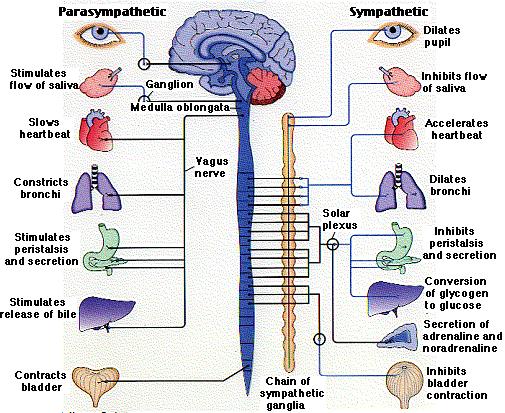



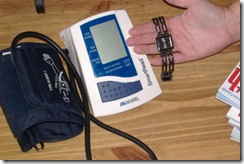
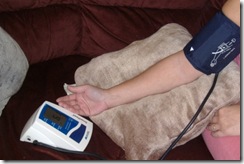
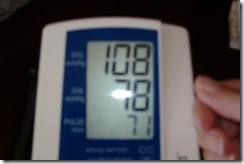
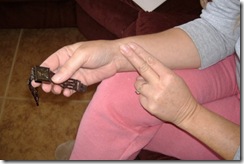
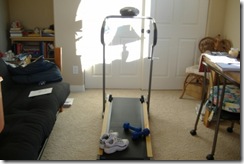





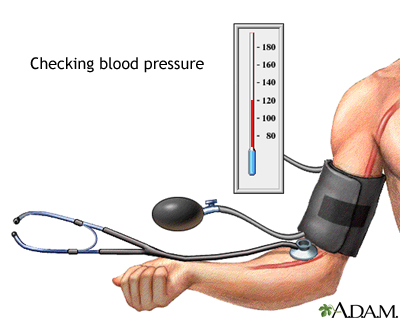
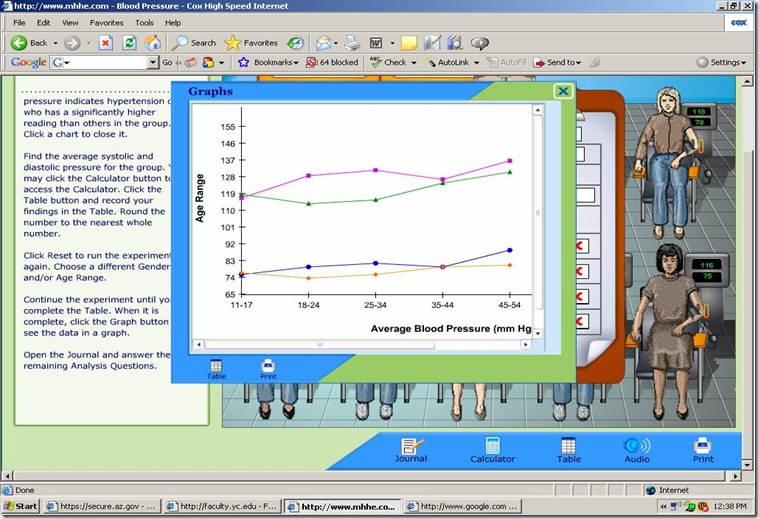








 www.freewebs.com
www.freewebs.com